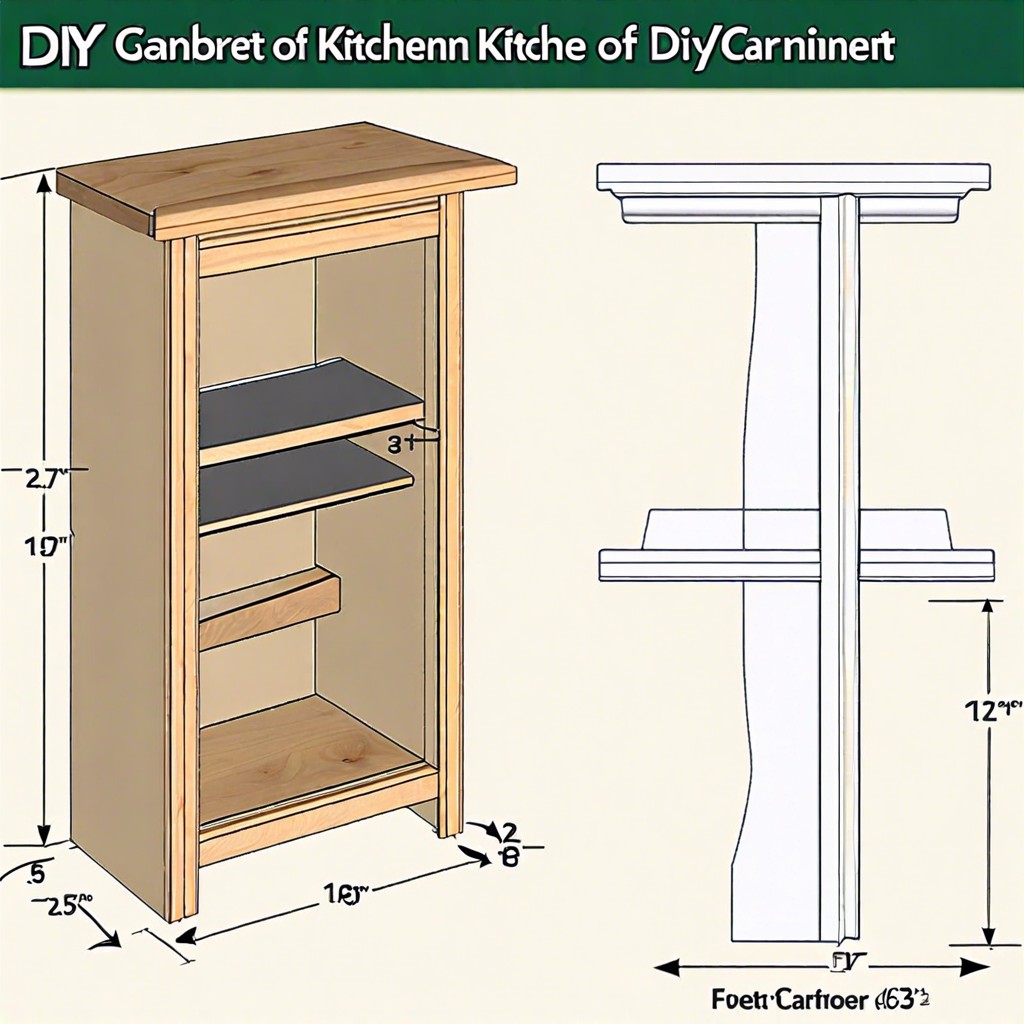Last updated on
Learn how to kickstart your food-selling venture at home using DoorDash with these straightforward tips.
Thinking about transforming your culinary creativity into a deliciously profitable venture from the comfort of your own kitchen? Selling on Doordash from home might just be your soufflé’s calling! From setting up your merchant account to getting the perfect packaging that says, “This ain’t your regular to-go box,” we’ve got you covered. Dive in as we unpack everything from crafting a standout menu to pricing strategies that tickle both taste buds and wallets. Ready to turn your kitchen into a delivery dynamo? Let’s dash into the details!
Key takeaways:
- Set up a DoorDash merchant account online.
- Obtain necessary permits and licenses for food sales.
- Create a unique, seasonal menu that stands out.
- Price items competitively while ensuring profitability.
- Maintain food safety and hygiene in your kitchen.
What's Inside
Setting Up a Doordash Merchant Account
First things first, grab your laptop or phone and visit the Doordash website. Time to get down to business! You’ll need to fill out a merchant application, which is a bit like a dating profile for your foodie empire—except less awkward and with way more delicious potential.
Once on the site, you’ll spot an option to signup as a partner. Click it. Don’t be shy! Fill in key details about your venture, like your business name and address. Since you’re running this gourmet gig from home, select the correct category to match your setup.
Have your tax ID or social security number handy because Doordash’s algorithm doesn’t quite believe in ghost kitchens. Safety first, folks!
Prepare to show some love to your bank account details too, for those much-awaited earnings. As for the menu, get an early start because you’ll need to upload it eventually. Just make sure it’s good enough to make your own stomach growl!
There, that’s the basics of setting up. Got wheels? Great, you’re rolling!
Licensing and Permits for Home-Based Food Businesses
Navigating the legal maze of permits can feel like trying to find the lid for your Tupperware – surprisingly elusive. Here’s your roadmap to make it a bit less daunting.
First, you’ll need a Cottage Food License or the equivalent Home Kitchen Operations Permit, depending on your state. It’s like getting a hall pass to cook food for the masses from the comfort of your home.
Check with your local health department. They’ll have information on food safety standards and any required inspections. It’s critical because nobody wants a side of salmonella with their sandwich.
Don’t forget a business license. Yes, even kitchen maestros need one to keep things above board.
Insurance? Not just for skydivers. Product liability insurance is your safety net for when that homemade hot sauce is a little too “kick you in the throat” spicy.
Ask your tax advisor about a sales tax permit. Uncle Sam wants his share, after all.
Remember, rules vary by location, so always confirm specifics with local authorities. It’s best to keep everything legal and above broth. Legal stuff might be dry, but your business? It can be zestier than a well-squeezed lemon.
Creating a Unique Menu for Delivery
Think local and think seasonal. This not only keeps your ingredients fresh and costs down but also adds a personal touch that customers can’t resist. Everyone loves a strawberry tart in summer, and who can say no to root vegetable stew in the heart of winter?
Highlight your specialties. If you’re known for your spicy noodles that can practically launch a firework show in someone’s mouth, make them the star. This sets you apart and gives customers a reason to click your menu instead of the other twenty.
Test innovative combos. Fuse familiar with exotic—like a kimchi taco or, dare you, a sriracha maple donut. People love adventures, especially on their taste buds. It’s a storytelling experience with every bite.
Keep dietary preferences in mind. Offering vegan, gluten-free, or keto options can broaden your appeal. It’s like opening your kitchen to a whole new crowd, and everyone loves feeling included in the food fiesta.
Mix it up with rotating specials. Keeps the menu exciting and brings customers back for something new. Picture it: Taco Tuesday gets a whole new twist every week. Don’t we all need something to look forward to?
Pricing Your Menu Items Competitively
Balancing your prices can feel like juggling flaming hotpots: exhilarating but tricky. Don’t be tempted to charge exorbitantly just because your spaghetti Bolognese is the best in town (although, honestly, it probably is).
First, check out what others are charging. Browse similar offerings on Doordash and take note of their prices. Aim to be in the same ballpark, maybe a little lower to woo customers initially.
Consider the costs you’ve got: ingredients, packaging, any delivery add-ons. Ensure your price covers these and leaves room for some profits.
Offer value in creative ways, like meal deals or family packs. Everyone loves a good deal, and it’s an excellent way to increase order size.
Avoid the “I’ll price it to the moon!” trap. While tempting, it could scare customers faster than a surprise jalapeño.
Finally, don’t forget to factor in the platform’s cut. It’s not stealing—it’s them keeping the lights on. You’ll want your price to account for that without leaving you out of pocket.
Pricing is an ongoing experiment, so don’t hesitate to adjust based on feedback and demand. Just keep the fire extinguisher handy when juggling those pot prices!
Packaging for Delivery and Presentation
Imagine your delicious masterpiece arriving at a customer’s door looking like it just did a roller-coaster ride—no bueno. Presentation and packaging are your food’s suit and tie for that all-important first impression!
Think sturdy containers. Something that won’t leak, spill, or explode like Montezuma’s revenge en route. Sturdy, eco-friendly packaging is the way to win over customers (and Mother Earth). Bonus points if it’s microwave-safe for those who love to reheat.
Ventilation is vital for anything fried or crispy. No one wants soggy fries that look like they’ve been sunbathing in a sauna. Vented containers keep things fresh and crisp, preserving your culinary genius.
Consider branding your packaging. A fun, quirky logo with contact details makes your food more memorable. Plus, it’s like giving your dish a business card.
Toss in some thank-you notes or a cheeky message to bring a smile to their face. You’ll build a rapport and become a highlight in their takeout experience.
Don’t forget utensils and napkins. There’s nothing like being halfway through a mess-tastic burrito and realizing there’s no napkin in sight. Life is tastier when the essentials are at hand.
Managing Inventory and Ingredients
Imagine the horror of discovering you’re out of tomatoes just as orders for your famous bruschetta roll in. Avoid this gut-wrenching scenario with good old-fashioned inventory management. Here’s how:
Keep a simple spreadsheet or use inventory management software to track your ingredients. This helps with knowing what’s low and what’s overflowing like a chocolate fountain at a wedding.
Plan ahead by projecting ingredient needs based on typical orders. Pizza party Fridays mean extra mozzarella, not Monday’s leftover salad greens!
Rotate stock using the first-in, first-out method. No one wants a vintage yogurt surprise in their smoothie.
Buy in bulk for non-perishables but beware of buying basil leaves like you plan to host a pesto festival next month.
Communicate with suppliers for fresh ingredients. Build a good rapport because a reliable carrot connection is worth its weight in, well, carroty gold.
Establishing a Schedule for Orders and Deliveries
Time management is your best friend. Imagine being a pizza delivery service running in a time warp—not ideal, right? Here’s how to keep chaos at bay:
Start by choosing your work hours. Are you an early bird who thinks breakfast burritos are a work of art, or a night owl turning tacos into a post-dusk delight?
Peak dining times matter. Dinner rush? That’s when everyone’s contemplating what to order instead of cooking. Be ready when they are hungry.
Buy yourself some time. Consider prep work before the rush. Vegetables chopped, sauces ready, playlists set to get you in the zone. No one delivers piping hot lasagna in their pajamas, after all—or do they?
Communicate clearly. Tell DoorDash your available times so they can relay the schedule. Nothing like a surprise order when you were about to test another episode of that show you’re hooked on.
Balance is key. Don’t overload. Maintain quality without accidentally turning your culinary dream into a chaotic kitchen circus. Though, juggling meatballs could be entertaining!
Remember, structure gives you freedom to focus on the joy of cooking and delivering to your hungry fans—without stealing precious couch-sitting-time.
Marketing Your Doordash Home Business
Social media is your best buddy. Post mouth-watering pictures of your dishes regularly. Use hashtags like #homemade or #yummyinmytummy to lure people in with the promise of taste nirvana.
Collaborate with local influencers who can give your food a shoutout. Free food in exchange for promotion? Win-win!
Offer discounts or promo codes through Doordash to first-time customers. Everyone loves a good bargain, especially when it comes grilled-cheese-warm and home-made-tasty.
Engage with your customers. Respond to reviews, thank your patrons, and address any issues. People love feeling heard, especially when their tummy is involved.
Don’t forget good ol’ word-of-mouth. Encourage happy customers to spread the word. Nothing beats the power of the #GoodFoodGossip.
Customer Service and Feedback Management
First impressions matter, and in the food delivery business, customer service is the icing on the cake. Start by creating a response strategy for customer inquiries and potential complaints. Swift, polite, and helpful is the magic trio.
Ask for feedback but brace yourself. Not every review will be a five-star serenade. Treat criticism like a condiment; it might be salty, but it can add flavor to improvement. Use feedback to refine your offerings and service.
Consider a loyalty program or special discounts for repeat customers. A surprise bonus in their next order is a little like finding a chocolate chip in your cookie—unexpected and delightful!
Remember, building rapport can boost your reputation. Personalized thank-you notes included with orders can tip the gratitude scale in your favor. Always strive to create an experience as tantalizing as your top dish.
Maintaining Food Safety and Hygiene Standards
Imagine serving soup with a surprising side of salmonella. Not the best marketing strategy, right? Ensuring your kitchen turns out delicious and safe meals is key.
First, consider a dedicated space for food prep. Keep it spotless. Your kitchen should sparkle more than Edward Cullen in sunshine. Regular hand washing is non-negotiable. Hands should be cleaner than a monkfish on a spa day.
Temperature control is crucial. Cold foods below 40°F, hot foods above 140°F. No one likes lukewarm lasagna—unless room temperature regret is your secret ingredient. Label ingredients and store them correctly. Mystery meat isn’t as enticing as you’d think.
Finally, gloves are great but changing them frequently is better. Cross-contamination is not a seasoning. Feeling queasy? Pause the prep. Your customers prefer your food, not your flu. Stay tidy, stay healthy, and let your kitchen be known for yum, not yuck!




